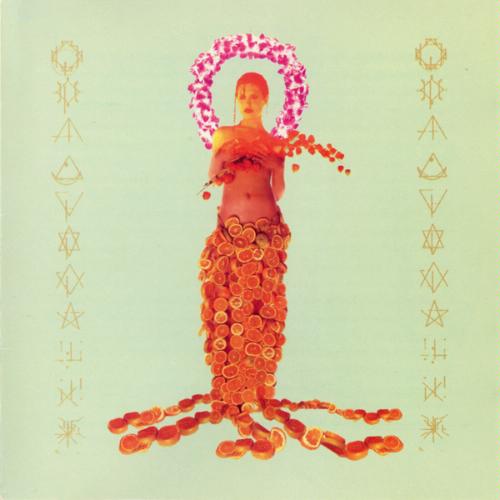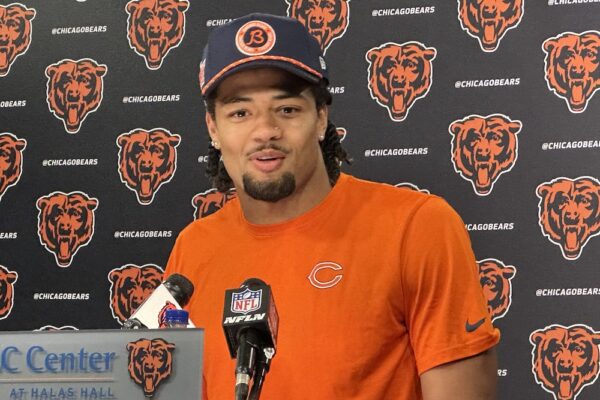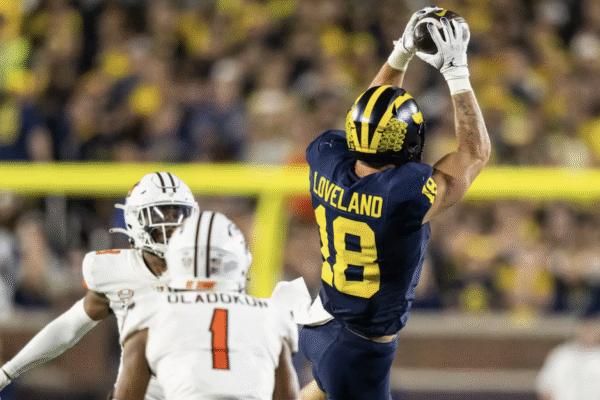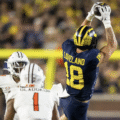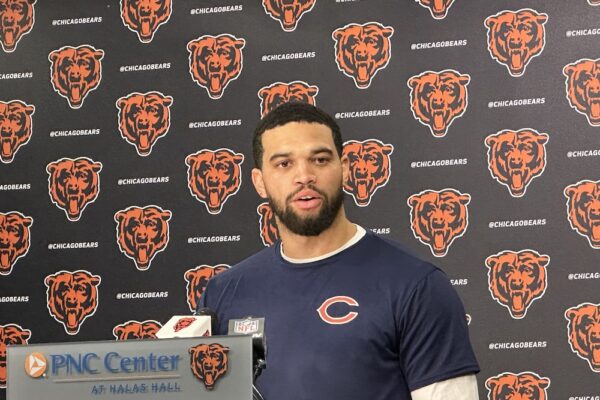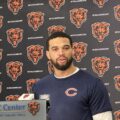Welp, it’s here. We’re doing it. After over 250 days without baseball, the Cubs and White Sox begin their 2020 seasons tonight, against the Brewers and Twins, respectively.
60 games. 66 days. Neither team will travel beyond the Midwest. It’ll be weird, and the validity of this season will be debated for years to come. But few baseball fans can deny their excitement about the return of baseball.
With that, let’s examine the state of the Cubs and of the White Sox.

Infield depth:
Cubs: The Cubs’ infield has been one of the teams’ strengths since their rise to contention back in 2015. Addisson Russell, Javier Báez, Kris Bryant and Anthony Rizzo, with Willson Contreras behind the plate, looked to be the bedrock of a prolonged run of Cubs dominance.
But the fallout from Addison Russell’s timeline of domestic violence, plus his rapid decline in play, prompted his release from the team (He is now with the Kiwoom Heroes in the KBO). Báez filling that void at shortstop has left the biggest question of the infield at second base. The Cubs have cycled through a laundry list of names like Tony Kemp, Ben Zobrist, David Bote and Ian Happ. Only Zobrist has provided any sense of stability and even then it was well-known to be in the short term.
It is with this in mind that David Ross said Jason Kipnis and Nico Hoerner will platoon second this year, a timeshare you can read more about here. Best-case scenario for the Cubs is that Hoerner emerges as a long-term fixture by the end of the season, but after a fast track through the minors spurred by a slew of injuries to Cubs shortstops in 2019, he may still not be quite ready to provide that degree of clarity. There is, after all, a reason Kipnis was brought in to split time.
Luckily for the Cubs, second base is the only hole on their infield. Offensively and defensively, Rizzo, Bryant and Báez dotting the rest of the infield is, at least on paper, among the better combinations of infielders in the National League (Bryant and Rizzo each had an fWAR of over 3.5 last season and Báez put together an impressive 4.8). Contreras and Victor Caratini make for a reliable duo at catcher, and the inclusion of a Designated Hitter in the NL means Contreras may get some time off while staying in the lineup.
Behind the usual starters that made the team are David Bote and Daniel Descalso, the ladder of whom is on the 45-day IL. Bote offers a reliable glove at second or third and possibly some heroics, but second base will be the only position without one single occupant.
From Kipnis: “I’m a strong boy right now. I’m going to tell you that right now. I put in a lot of work. The time off, I know there was a chance to. It was like a fork in the road. You kind of go in two different directions. You can kind of wait by the sideline and kind of wait to when we’re going to get back in, or you can keep working out and stay focused and get after it a little bit and come back in better shape.”
White Sox: Like the Cubs, the White Sox’ infield is pretty set beyond second base, and even there they arguably have more clarity. Yoán Moncada, after a stellar 2019 with a 5.9 fWAR, returns to third base. Tim Anderson at shortstop will return the 2019 AL Batting champ to his regular position, and he and Moncada will bat one-two in various orders. After slogging through years of losing, José Abreu, in his age-33 season, is back at first, and Yasmani Grandal, after an All-Star appearance in 2019, was signed to a four-year contract this past offseason to be the primary catcher. He will split time with James McCann, also an All Star in 2019, with Zack Collins potentially in the mix, who made the 30-man roster this year. Edwin Encarnacíon will play a little first, potentially as well as Collins, but he’ll also be in the DH role.
Utilityman Leury García will start out at second base, for now. 2018 first round pick Nick Madrigal is the forgotten soul in the White Sox prospect hype, and he will start the season at the team’s Schaumburg camp, with a call up essentially imminent. A highly touted hitter, Madrigal is ranked by Baseball Prospectus as the #13 prospect in baseball. If he becomes a part of the regular starting lineup, the White Sox will have the everyday infield fans have salivated over for years.
From GM Rick Hahn: “It came down to, in the end, that we felt that the lineup was stronger and, overall, we were going to be more productive with Leury at second base, proving us that switch-hitting presence in the lineup. Certainly, currently, Leury, his timing and readiness seems to be a little ahead over where [Madrigal] was over the last couple of weeks.”
Outfield depth:
Cubs: Centerfield has evaded the Cubs ever since Dexter Fowler left the team in free agency following the 2016 season. Albert Almora Jr. never took a meaningful step as a hitter and actually became a liability in the field last year, posting a negative UZR. Jason Heyward’s spent time there, but there’s a reason his Gold Gloves come from right field. Steven Souza Jr. made the roster, but a negative WAR season in 2019 with the Diamondbacks doesn’t inspire much hope. So, the eggs are in the Ian Happ basket.
Despite being drafted as a second baseman, Happ’s speed and versatility have put him in the outfield. After starting 2019 in the Minors, Happ put together a nice campaign upon his July return. Hitting six home runs and slugging an eye-popping .672 in the month of September showed he may have been turning a corner, and him finding his groove as someone who can hit for power from both sides of the plate would mean the Cubs have found their answer in center field (He actually was above average in center, per UZR).
Kyle Schwarber and Heyward will occupy the corners, barring days off or Schwarber DHing. Those are the instances Souza Jr. was brought in for. Heyward still hasn’t become what the Cubs thought they were getting as a hitter, but Schwarber’s bat, with his.282 ISO, in the middle of the lineup is dangerous.
White Sox: Luis Robert and Eloy Jiménez headline this group. Both of them were ranked as the #3 prospects in baseball at the time of their callups by MLBPipeline, and both of them are considered franchise-changing players.
We saw what Jiménez was capable of in 2019, when he hit 31 home runs and a respectable wOBA of .343. There are questions defensively, but time at left field will theoretically improve those troubles, keeping him as the primary leftfielder in 2020.
The plan was for Nomar Mazara, acquired via trade with the Rangers in the offseason, to be the primary right fielder, but his placement on the 10-day IL will cause him to miss the beginning of the season. Nicky Delmonico was added to the 30-man squad and can play time there. Adam Engel is a solid fourth outfielder who can play highlight-reel defense in center and put solid contact on the ball, like he did Sunday against Kyle Hendricks.
But the piece de resistance is Robert, who the Sox signed out of Cuba in 2017. Robert soared through the Minors, playing in three different leagues last year, and got his call up this year in the form of a six-year contract extension.

Robert brings an instant influx of power and speed on the bases that can translate to plus-defense. Across 122 games in the Minor last year, he put up a slash line of .328/.376/.624 and hit 32 home runs. I’ve outlined what his potential impact could be before, but Robert has the ceiling to be one of the best players in baseball (Jiménez even called him the next Mike Trout, for what it’s worth), and if he comes even close to his potential, the White Sox will have a catalyst to relevance for years to come.
From Hahn: “The expectations are so high (for Robert) that there is this sort of normal sense of caution that you don’t want to put too much on a kid. Certainly, thus far, he’s shown no effects of the notoriety with which he came to us, much less the anticipation that’s built over the last few years, based on performance as well as the contract we gave him.”
Starting pitching
Cubs: The Cubs’ starters will go in the following: Kyle Hendricks on the 24th vs. Milwaukee, Yu Darvish on the 25th vs. Milwaukee, Tyler Chatwood on the 26th vs. Milwaukee, Jon Lester on the 27th vs Cincinnati and Alec Mills on the 28th vs. Cincinnati. Quintana’s absence on this list is due to his placement on the 10-day IL after a thumb injury, and filling the void is Mills.
Hendricks is the closest to a sure thing on a rotation of uncertainties. Uncertainty about Darvish building off the second half of his 2019 season. Uncertainty about Jon Lester continuing to defy Father Time. Uncertainty about Mills as a young pitcher. Uncertainty about Chatwood getting the ball in the strike zone more often than not.
Hendricks is the “ace” of this staff, whether he was to start on opening day or not. He’s talked about his improved curveball, which he flashed in his start against the White Sox on Saturday, and if it ends up a reliable pitch, he may take another step as a starter (He threw his curveball on only 9.8% of pitches last year, per Baseball Savant). His home/road splits were drastically different (2.04 home ERA and 5.02 away ERA), and with empty stadiums, he’ll be a test case of how much that impact is due to fans and how much is due to dimensions.
Darvish simply was a different pitcher after the 2019 All-Star break; he threw 118 strikeouts in 81.2 innings starting July 12, allowing a 2.76 ERA in that span. His start against the White Sox on Sunday, in which he allowed five runs in the first inning, was troubling, and his propensity to give up home runs lingered throughout his hot ending last year (He allowed 1.44 HR/9 in that time).
Darvish is supposed to be the Cubs’ number two, and if he can’t be relied on, this will be a difficult season for the team. Lester keeps defying expectations for his age, and in only a 60-game he may stay fresh throughout the year, but it’s important to manage expectations for a 36-year-old. Chatwood, despite the strides he’s made since his disastrous first season in Chicago, still has yet to prove himself as a starter over a long stretch of time, and Mills, while an intriguing prospect, probably won’t be much more than a solid starter to have at the back of a rotation.
Best case scenario for the Cubs is Hendricks pitches like Hendricks and Darvish indeed builds off his success from last year. Lester stays strong as the workhorse he has been and is buoyed by the shortened season. Finally, in a perfect Cubs world, Quintana comes back strong as a fourth starter, pushing either Chatwood or Mills out of the rotation (The team’s checkbooks would prefer it be Chatwood in the rotation).
From Manager David Ross: “When you talk about everything that Kyle (Hendricks) encompasses. One: His resume. The big games he’s already pitched in and the way he’s carried himself and handled himself in those big games. You look back on just the length of his career, I remember when I first got here, the narrative was he couldn’t get through a lineup three times, which makes me laugh now. Just to see the way that he has grown.”
White Sox: Lucas Giolito, coming off a terrific 2019, and Dallas Keuchel headline this staff. After them, the rotation goes Reynaldo López, Dylan Cease and Carlos Rodón. Whether or not Michael Kopech playing this season would make it a six-man rotation or if someone would move to the bullpen is a question for another day. Gio Gonzaelz, signed this past offseason, will serve as a left-handed reliever when needed out of the bullpen.
At 32, Keuchel is the only member of this staff older than Rodón, who is the ripe old age of 27. Keuchel and Giolito are the only two who also don’t have much to prove, other than Giolito proving that 2019 was no fluke. López is trying to get back on track after a disastrous 2019, Cease, who was called up only last year, is still in the acclamation phase of his career, and Rodón still needs to show consistency while at the same time come back from Tommy John surgery.
I’ve dug deeper into their rotation before, but in short, they have a lot to prove. And that’s still ok for this season. The White Sox should make noise in their division, and with every second-place team now guaranteed a playoff spot, they only have to be better than Cleveland to get in. Control issues plagued López and Cease last year. Ideally, they shake that off as they go through their development. López has talked about not even being in the proper mindset to pitch effectively. Ródon’s looked the part before but still hasn’t prolonged it. Since they’re so young, there’s not much reason to be pessimistic about the rotation as a whole, but we still will not know the full outlook of its future after this shortened season.
From Hahn: “This year, of all years, we know we’re going to have to remain flexible. The situation is certainly very fluid, and guys’ roles could very well alter over the course of a season. Initially, the way we’re currently drawn up, we’ll go with the five-man rotation, with Carlos (Rodón) in the five-hole. And Gio (Gonzalez) will provide some length and insurance out of the bullpen.”
Bullpen:
Cubs: The Cubs were let down by their bullpen in 2019, and although possible diamonds in the rough may have been uncovered in Rowan Wick and Kyle Ryan, the unit blew the sixth-most saves in baseball with 28. Craig Kimbrel, who didn’t sign until June, fell vastly short of expectations, allowing nine home runs in 20.2 innings. They went 19-27 in one-run games.
The Cubs’ bullpen strategy has been to remake pitchers through their highly technologized pitching lab. That lab produced promising seasons from Wick (2.43 ERA in 33.1 IP, with a 9.4 K/9), Ryan (3.54 ERA in 61 IP and a K/9 of. 8.0) and Brad Wieck, who had a ridiculous 16.9 K/9 in a small sample size of 10 innings.
The Cubs, arguably wisely, didn’t go fishing for a big money reliever in free agency or via trade. Any large investment in relievers carries a great amount of risk, so from their perspective, investing in things that make pitchers better is a smarter way to spend money. They took flyers on Dan Winkler and Jeremy Jeffress, the latter of whom just a few years ago was the closer of a Brewers team that got to the NLCS. Dillon Maples made the team, and if he could get just a little control of a ridiculous slider, he may be effective out of the pen. The Cubs brass has been impressed by young arms like Duane Underwood Jr. and James Norwood, who, with Maples, are referred to as the Woods by Epstein. If they can get some stability out of Kimbrel, their bullpen has a chance to round into good shape with their collection of young pitchers and reclamation projects. The pitch lab has had impact before, so maybe it becomes a not-so-secret weapon in putting a bullpen back together.

From Epstein: “If you look at the ‘pen, you can kind of group the guys a little bit. The Woods, Underwood, Norwood and Maples, three homegrown power arms who are at different stages of their development and coming into their own. And all will have an opportunity and a chance to make an impact.”
White Sox: The Cubs, whether or not they’re in position to, are still trying to contend for a World Series in the short. The magnifying glass on their group is thusly enhanced.
The White Sox aren’t there yet, but their bullpen still looks to be a position of strength. Aaron Bummer had a rapid ascension in 2019, with a hard fastball coupled with a weak-contact-inducing cutter that led to him being one of the best relievers in baseball last season. His 72.1% ground ball rate was the second highest among qualified relievers last year and that looks to be another feature of his game this season.
Beyond Bummer, the White Sox have a solid group of arms. Kelvin Herrera has been a much different pitcher than the one that was in a historically dominant 2015 Royals bullpen, largely due to a Lisfranc injury suffered in 2018. Getting back more to his previous form would certainly serve the White Sox well. Steve Cishek was brough in and will provide a veteran presence after a solid couple years with the Cubs. Alex Colomé had a great start to last season but took a different path after the All0Star break; still, he converted 30 of 33 save opportunities. Jimmy Lambert, named to the 30-man roster, may be of service as a long reliever, but for where they’re at now, the bullpen is not necessarily something the Sox need to agonize over. It will, however, certainly be a point of emphasis in the future.
Prediction:
Cubs: I don’t quite know what to make of the Cubs. It seems every positive sentence about them begins with “On paper…” The NL Central is murky enough, though, that expectations of a return to the playoffs aren’t far-fetched; the Brewers will have a lot of turnover, but still return Christian Yelich, a healthy Brandon Woodruff and more of Keston Hiura. The Cardinals didn’t add much, but didn’t really have to after reaching the 2019 NLCS with a dynamite rotation headlined by Jack Flaherty. The Reds are on the rise as well, as their veteran additions coupled with prospect call-ups make them a real threat in the division. Still, I’ll err on the side of optimism and say there are too many playoff spots and there is too much talent on the roster for them to miss the postseason (Oh, how that sounds so familiar to last year’s attitude). Maybe a Ross-charged revitalization of their clubhouse is what they needed to sneak into the playoffs, either as a second-place team or as a seventh or eight seed.
White Sox: Maybe I’m too lost in the hype, but the White Sox may very well be a more talented team than the Cubs this year. Position for position, the two teams match up well. Even in the rotation, I like the White Sox’ one-two more than the Cubs’, despite the unknown at the backend of their staff. I see the White Sox as a playoff team this year; there is something to the old cliche of “knowing how to win” that they probably don’t have yet, but they only have to better than the Cleveland Indians to get second place in their division and reach the playoffs. Robert might not take the league by storm through 60 games, as there’s almost always an acclimation period, but there is enough in the tank for the White Sox to take a step forward this year.
